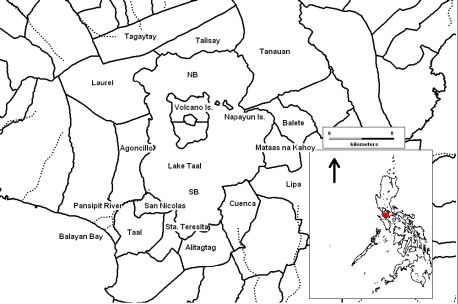VOLUME 4 NUMBER 1 (January to June 2011)

Philipp. Sci. Lett. 2011 4 (1) 001-010
available online: January 10, 2011
*Corresponding author
Email Address: rspapa@mnl.ust.edu.ph, reypaps@yahoo.com
Submitted: August 12, 2010
Revised: December 09, 2010
Accepted: December 15, 2010
REVIEW
History of the biodiversity and limno-ecological studies on LakeTaal with notes on the current state of Philippine limnology
by Rey Donne S. Papa1* and
Augustus C. Mamaril Sr.2
Augustus C. Mamaril Sr.2
1Department of Biological Sciences, Graduate School and Research Center for the
Natural Sciences, University of Santo Tomas, Manila, Philippines
2Institute of Biology, University of the Philippines, Diliman, Quezon City, Philippines
Natural Sciences, University of Santo Tomas, Manila, Philippines
2Institute of Biology, University of the Philippines, Diliman, Quezon City, Philippines
Scientists have studied Lake Taal for its diverse floraand fauna, active volcanism and unique limnologicalfeatures. In this paper, we track the development ofscientific interest based on available literature whichmay help determine the current needs and futureprospects for more in-depth research. The early part of the 20thcentury became the starting point of limno-ecological andbiodiversity research in Lake Taal. Other significant researchessuch as the BFAR, PCAMRD, FISHSTRAT and Akvaplan-nivaprojects have been able to compile additional information on thelake. Unfortunately, many other aspects have remainedunstudied while some completed projects remain unpublished orhave become "gray literature". The lack of funding, long-termmonitoring and the publication culture among local scientistshave hampered the further growth of research on the lake. Thisscenario calls for the revival of limnology which can developscientific knowledge on Philippine lakes.
© 2024 SciEnggJ
Philippine-American Academy of Science and Engineering